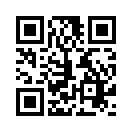[033] Smooth muscle contraction (GB#115G01) | 基礎医学教育研究会(KIKKEN)Lab

● The length of the smooth muscle changes many times
The muscles making up the internal walls and the muscles making up the walls of the blood vessels are collectively called the smooth muscle. “Smooth” seems to mean that there are no stripes in muscle cells. There seems to be some differences in the mechanism of controlling smooth muscle contraction depending on vessels, but what is commonly different from striated muscle is that the range of stretching is many times wider. This property is closely related to the absence of stripes. However, unexpectedly, it seems that there is no established theory yet how it really works.
–
Contents
● Smooth muscle cells are also filled with muscle filaments
Why are there no stripes, because there is no regular filament repetition structure like a striated muscle. Not in the absence of muscle filaments, there are also large amounts of myosin and actin very similar to the striated muscle in smooth muscle cells.Each constitutes a thick filament ![]() and a thin filament.
and a thin filament.![]() However, since this is mixed in various arrangements, the microscope can not see a prominent structure. If you look closely well, small pieces called dense bodies are scattered around the cell.
However, since this is mixed in various arrangements, the microscope can not see a prominent structure. If you look closely well, small pieces called dense bodies are scattered around the cell.![]() This is a protein that summarizes the root of many bundles of actin filaments, and it is explained that it is like a Z band in the striated muscle.
This is a protein that summarizes the root of many bundles of actin filaments, and it is explained that it is like a Z band in the striated muscle.
Does the smooth muscle filament slide?
Myosin in smooth muscle, activation mechanism is slightly different from striated muscle and its unique biochemical background seems to be quite well studied. On the other hand, it seems that actin filaments and myosin filaments move with each other, because they seem to slide with striated muscles, so does smooth muscle? There is not much commentary on this level. Since the arrangement of the filaments of smooth muscle cells is not uniform at all, it is not able to verify the correspondence between the movement of cell elongation and contraction and the movement of filaments. Therefore, it seems that the mechanism that the myosin head pulls the actin filament is considered to be the same as the striated muscle as it is.
● Filament of smooth muscle is too free
In smooth muscle, we can not directly observe the movement of muscle filament, so we can only imagine from indirect observation. Many people are saying various imaginations. But what is most common is that the thick filament enters between the opposite actin filaments and pulls each other. Therefore, it seems that the thick filaments of the smooth muscle are considered to reverse the direction of sending (pulling?) actin filament by its surface. Also, the striated muscle is not able to shrink beyond that when a thick filament hits the Z band, but it seems that myosin does not matter at all in smooth muscle beyond the dense body. Furthermore, the characteristic mechanism in smooth muscle, the length of the filament is always changing depending on the situation, the arrangement of the filaments is not constant, and it is also thought that combing is occurring each time according to elongation and contraction there.
● The filament extends when the smooth muscle contracts
In biochemical studies, contraction of smooth muscle is the same as striated muscle that intracellular calcium ion increase will trigger contraction. However, it is not troponin of thin filaments that calcium ions bind. It is a protein called calmodulin (CaM) that is abundantly distributed in cells. When calmodulin binds to calcium ion, myosin head of smooth muscle is activated, and interaction between myosin and actin begins using ATP energy. At this time, a thick filament will draw in the actin filament, but in some cases it is also considered to extend a thick filament along the actin filament. Conversely, in an inactive state, unnecessary myosin dissociates (becoming loose) and thick filaments will also become short. The actin filament also seems to be amazing that a large amount of isolated actin molecules are scattered around and that the length of the thin filament becomes longer or shorter depending on the situation.
● There are various smooth muscles
Even if it says a smooth muscle, it seems that there is quite a difference in the nature of the cell, depending on the organ that contains it, because it is just stuffed that there is no transverse striae. These days, the mechanisms of smooth muscle contraction are well studied are the muscles attached to the cartilage of the respiratory tract. In research, there is an advantage that the direction of the muscle fibers is relatively aligned, and the standard length is relatively easy to determine. However, smooth muscle of internal organs such as gastrointestinal tract and smooth muscle of blood vessels seems to have a slightly different property from this. Also the erector pili at the root of the hair and the ciliary muscle and the iris muscles in the eyeball are smooth muscles. These also seem to have differences in the nature of contraction.
Well, since nobody knows clearly, various mechanisms are considered to explain the flexibility of smooth muscle. So, this animation is actually an imagination chart that “KIKKEN lab” gathered in text with reference to the literature of tracheal smooth muscle that can be read mainly by free stuff and incorporates various theories, so it may be different in fact, Please forgive me at that time (laugh).
○ Reference sites
・Japan Smooth Muscle Association Homepage
・Smooth muscle tissue (Wikipedia)
・Contraction of smooth muscle(Kitasato University veterinary physiology HP Yonezawa branch)
・Direct evidence for functional smooth muscle myosin II in the 10S self-inhibited monomeric conformation in airway smooth muscle cells, PNAS 108, (2011).
・Myosin filament polymerization and depolymerization in a model of partial length adaptation in airway smooth muscle, J Appl Physiol 111,(2011).
・Mechanism of partial adaptation in airway smooth muscle after a step change in length, J Appl Physiol 103, (2007).
・Extensive length-force relationship of porcine airway smooth muscle, J Appl Physiol 102, (2007).
・Myosin filament assembly in an ever-changing myofilament lattice of smooth muscle, Am J Physiol Cell Physiol 289, (2005).
・Length adaptation of airway smooth muscle: a stochastic model of cytoskeletal dynamics, J Appl Physiol 99, (2005).
・‘Sarcomeres’ of smooth muscle: functional characteristics and ultrastructural evidence, J Cell Sci 118, (2005).
・The catch contraction of bivalve smooth muscle was reproduced in vitro for the first time in the world and its molecular mechanism was elucidated (National Institute of Information and Communications Technology) May 22, 2001 (acquired pdf from the link)
○ Related articles
◆[022] 胃と十二指腸 the stomach and the duodenum ![]()
◆[005] Peristalsis ![]()
◆[012] 分節運動 intestinal segmentation ![]()
◆[025] Vasomotor ![]()
◆[054] Switching of the airway and esophagus (GB#105A04)![]()
◆[019] アデノシン三リン酸(ATP) adenosine triphosphate ![]()
◆[009] The range of musclular contraction ![]()
◆[035] 骨格筋収縮の張力 tension of the skeletal muscle contraction ![]()
◆[026] Interaction of myosin and actin ![]()
◆[020] 対光反射 pupillary light reflex ![]()
◆[014] Accommodation of the eye ![]()
◆[001] Heartbeat pumping ![]()
◆[041] 心筋線維 myocardial fiber ![]()
◆[043] 糸球体のろ過 glomerular filtration ![]()
◆[053] Acetylcholine receptors (GB#114B03) ![]()
○ Referenced books
・プロッパー細胞生物学: 細胞の基本原理を学ぶ,化学同人
・Essential細胞生物学〈DVD付〉原書第3版,南江堂
・細胞の分子生物学, ニュートンプレス; 第5版 (2010/01)
・肉単―ギリシャ語・ラテン語 (語源から覚える解剖学英単語集 (筋肉編))
・カラー図解 人体の正常構造と機能 全10巻縮刷版,坂井 建雄,日本医事新報社
・人体機能生理学,杉 晴夫,南江堂
・トートラ人体解剖生理学 原書8版,丸善
・イラスト解剖学,松村 讓兒,中外医学社
・柔道整復学校協会編「生理学」,南江堂
・東洋療法学校協会編「生理学」,医歯薬出版株式会社
rev.20140429,rev.20150713. rev.20160904,rev.20170505.
KISO-IGAKU-KYOIKU-KENKYUKAI(KIKKEN)







